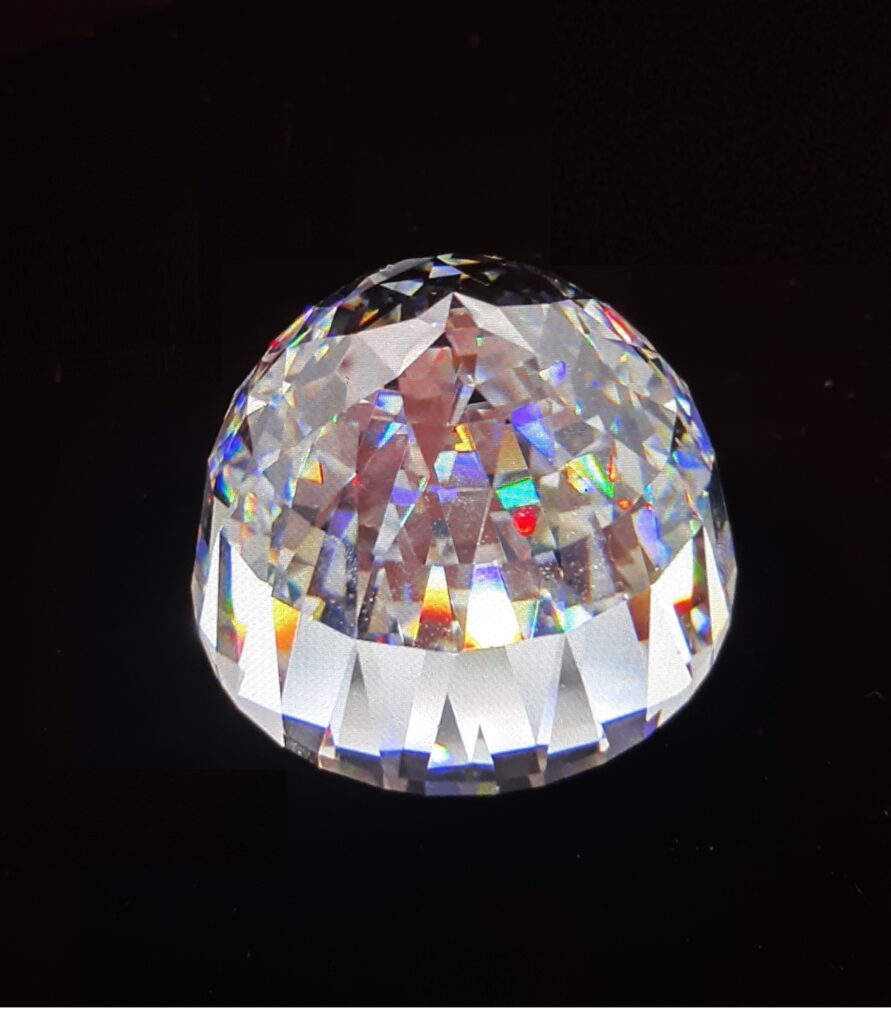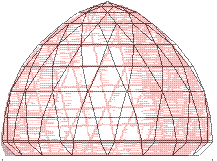
Specifications
Weight: 275.65 carats
Dimensions: 34.85 x 25.61 mm
Color: Colorless
Weight of Rough: 808.37 carats*
Origin: India
Date Found: Early 1600’s
Current Location: Unknown
*Metric carats
Details
There is only one recorded instance of this stone, and it occurs in Tavernier’s book (1676). He described it “as of an egg cut in two”, weighing 279 9/16 carats (after conversion of Florentine to old English carats, and then to modern carats, yields a weight of 275.65 modern carats. Modeling used this weight for all calculations.) After this one brief mention, the stone disappears from history.
Alexander Fersman, a noted Russian geologist and gemologist of the early 20th century, studied the Orloff diamond in the Russian Crown Jewels. It too has a shape that can be described “as of an egg cut in two”, and surmised that it was cut from the Great Mogul (the Orloff weighs about 189 carats). After extensive studying, he concluded that the two stones were one and the same, that the Orloff was cut from the Great Mogul. This makes sense from both a gemological and historical perspective, as these are the only two diamonds that would match this general description. The Great Mogul has no definitive end, nor does the Orloff have a definitive beginning, so it is reasonable to assume one came from the other.
Others have replicated this stone in a 787 carat version (808.37 modern carats). This seems to be in response to a Lapidary Journal article from 1969 where the author was mistaken. Tavernier clearly states that this larger number is the weight of the rough, not the finished stone. Ball, in his appendix to Tavernier (1682), has an extensive discussion concerning these weights (p. 331-343). He also relates how this stone’s history could be intertwined with that of the Koh-I-Noor diamond.
Tavernier’s drawing hardly provides enough information for easy modeling, as it doesn’t show a consistent symmetry. Are there 12 primary facets in any given row, or 16, 24, 32, or perhaps an odd number? What you see in the drawing above is all there is to work with. My replica was created to emulate the number of facets, size, and shape as much as possible, plus ensuring the side angles of the model match the side angles of the drawing. This resulted in a model with 32 facets in the rows closest to the girdle.

Note the overlay above with the discrepancy in the angles in the lower left and right where the overlap is not perfect. I believe this represents where the cutter made the stone a little off-center when transferring it from the cutting of the bottom to the cutting of the top. Also, the facet pattern is not exact, but the model has the same triangular and trapezoidal facets as on the drawing. The resultant model is the best I could derive to get this facet pattern, and 16-fold symmetry was required to make sidewall angles match. Although there are differences, it is the best I could do, and if someone comes up with a better pattern, please let me know and I would be happy to put your version on this site with appropriate credits.
And whether the replica is right or wrong, it is impressively brilliant and scintillating! What would you expect with 280 facets?
